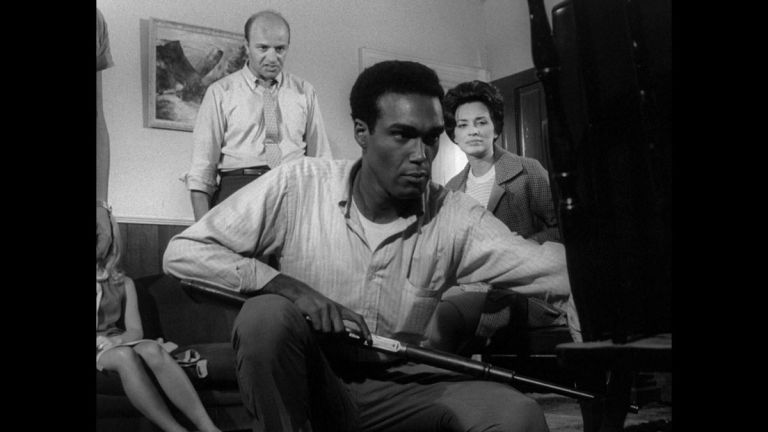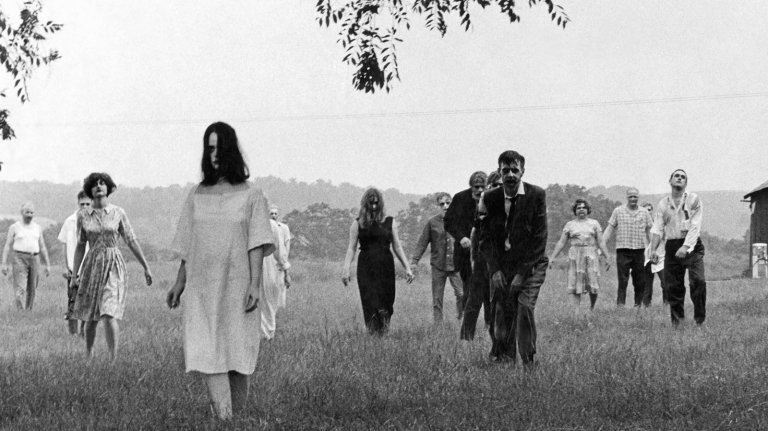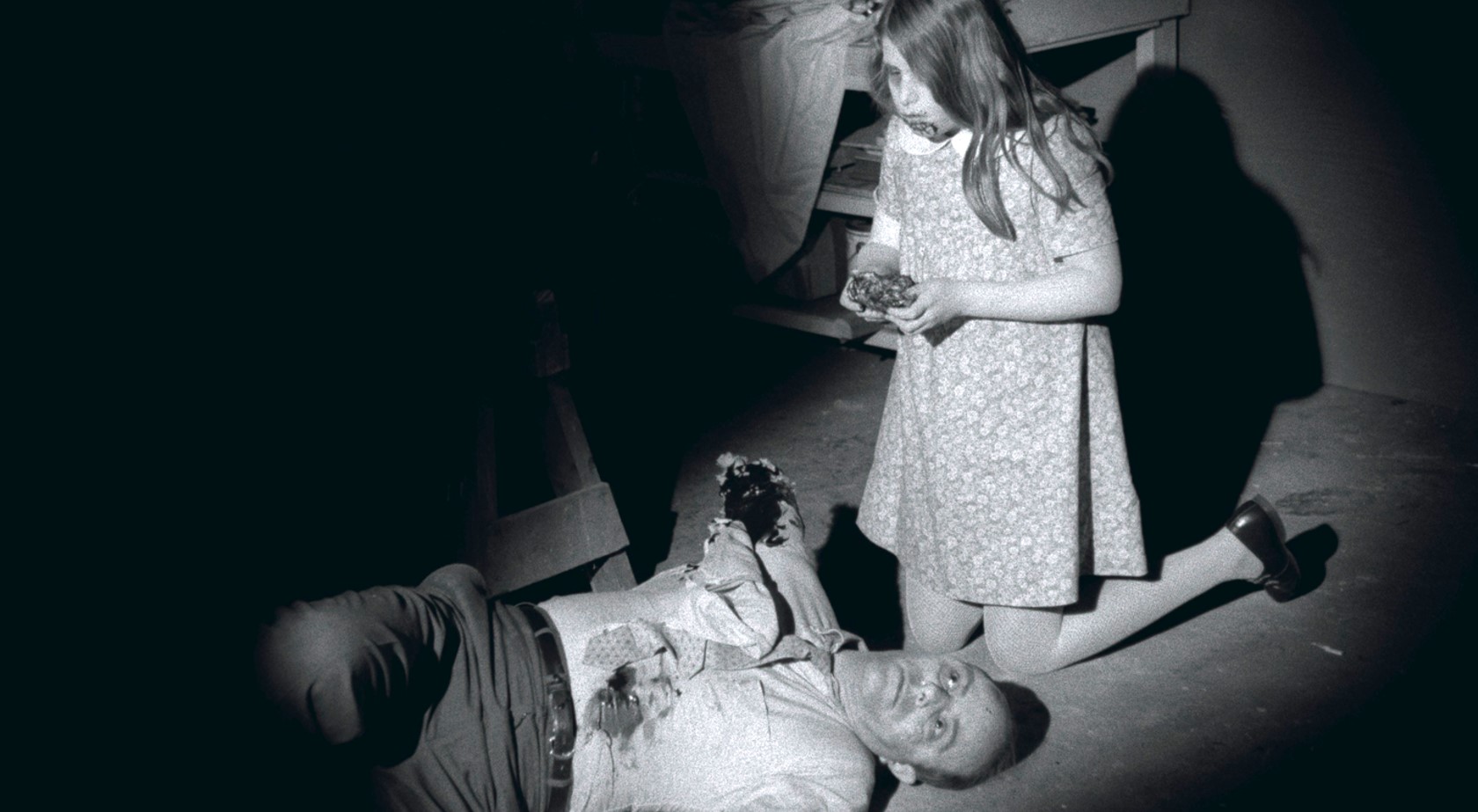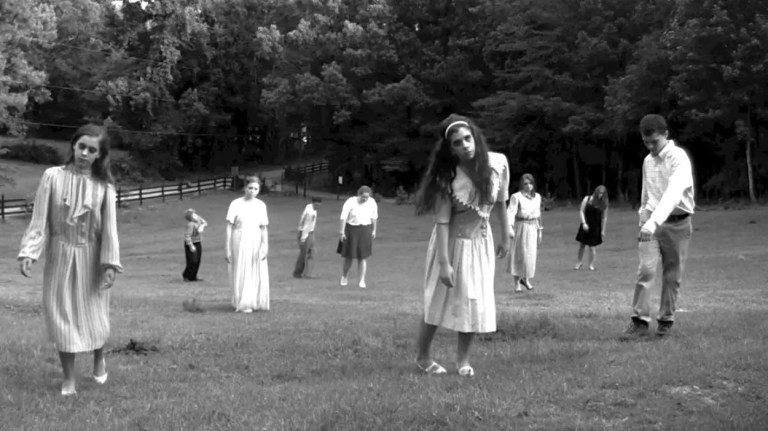‘Night of the Living Dead’ (1968): 21 Fascinating Facts About a Legendary Horror Movie
“They’re coming to get you Barbara!”

One of the most well-known independent films of all time, Night of the Living Dead is the first modern zombie movie. It created many of the tropes and “rules” about zombies still present in zombie movies today. George A. Romero directed and cowrote the movie with help from friends and family. Utilizing local Pittsburgh stage actors, the budget for the project was a meager $114,000. It would go on to earn $30 million against its microscopic budget, making it one of the most profitable films of all time and launching one of the most recognizable franchises in the genre.

Night of the Living Dead begins with siblings Johnny (Russell Streiner) and Barbara (Judith O’Dea) driving to visit their father’s grave in rural Pennsylvania. Johnny jokes that an unkempt man in the cemetery is coming to get Barbara, only to be attacked by the ghoul. Barbara flees and finds refuge in a nearby farmhouse, where she becomes catatonic. Ben (Duane Jones) arrives at the farmhouse and takes charge, boarding up the windows and doors. From the cellar, survivors Harry (Karl Hardman) and Tom (Keith Wayne) emerge. Tom’s girlfriend Judy (Judith Ridley) and Harry’s wife Helen (Marilyn Eastman) and daughter Karen (Kyra Schon) have also taken refuge in the farmhouse cellar. The survivors bicker about the best course of action as television reports an outbreak of mass murder at the hands of the reanimated corpses.
At the time of its release, the gore and macabre content of Night of the Living Dead generated controversy, especially as it predated the Motion Picture Association of America rating system and children attended the matinee screenings. It is now considered one of the best movies ever made, a cult classic and the father of all modern zombie films. Here are some fascinating facts about the making of Night of the Living Dead:
- The first idea for Night of the Living Dead saw the story as a horror comedy about adolescent aliens and teenagers from Earth but Romero and co-writer John Russo knew they couldn’t afford to make a movie like that.

2. The reason the ghouls in Night of the Living Dead are recently deceased people is because producers knew they didn’t have the budget to convincingly portray long-dead corpses.
3. The story eventually became an anthology epic, with the sequels Dawn of the Dead (1978) and Day of the Dead (1985) existing in the same universe but following different characters. In total, Romero released six sequels. Cowriter John Russo released his own movie set in a universe where Night is just a movie, The Return of the Living Dead (1985).
4. Romero’s son, George Cameron Romero, developed a prequel to his father’s film called Origins which has never been made.
5. At the time the film was made, it was rare for black actors to get a lead role (especially a heroic lead role) in a film with primarily white actors. The horror community has long debated how intentional this progressive casting choice by Romero was, with Romero insisting that Duane Jones was simply the best performer at auditions.

6. Jones’s character, Ben, was at first imagined as a country bumpkin truck driver. Jones, a former university professor, elevated the character to the reserved and intelligent portrayal we remember. Much of the final film was ad-libbed by the actors.
7. Jones was concerned about the scene where Ben hits Barbara, given racial tensions at the time and what kind of outrage a black man hitting a white woman might provoke. Though he later believed he should have listened to Jones, Romero and others insisted the scene be kept because they thought it would feel “hip” to go against social norms.
8. Duane Jones said he never watched any of the other Dead movies.
9. The word “zombie” is never mentioned in Night of the Living Dead. Romero thought that the monsters he created were something “completely new” and distinct from the “Haitian zombies” he’d seen before in films such as White Zombie (1932).

The kids in the audience were stunned. There was almost complete silence. The movie had stopped being delightfully scary about halfway through, and had become unexpectedly terrifying. There was a little girl across the aisle from me, maybe nine years old, who was sitting very still in her seat and crying … It’s hard to remember what sort of effect this movie might have had on you when you were six or seven. But try to remember. At that age, kids take the events on the screen seriously, and they identify fiercely with the hero. When the hero is killed, that’s not an unhappy ending but a tragic one: Nobody got out alive. It’s just over, that’s all.
Roger Ebert, Night of the Living Dead
10. Karl Hardman, who played Harry Cooper, also voiced the radio newscaster heard in Johnny’s car in the opening scene. He also helped with makeup artistry and sound engineering as well as taking photos that appear in the closing credits.
11. The role of Karen Cooper was played by Hardman’s real-life daughter, Kyra Schon.
12. Karl Hardman and Marilyn Eastman were business partners and life partners until Eastman’s death in 2007. They both helped finance Night of the Living Dead.

13. The actors’ clothing came from Goodwill.
14. The source material of Night of the Living Dead is recognizable to genre viewers: Romero took inspiration from Richard Matheson’s sci-fi novel I Am Legend, which was also adapted into a Will Smith blockbuster in 2007.
I thought I Am Legend was about revolution. I said if you’re going to do something about revolution, you should start at the beginning. I mean, Richard starts his book with one man left; everybody in the world has become a vampire. I said we got to start at the beginning and tweak it up a little bit. I couldn’t use vampires because he did, so I wanted something that would be an Earth-shaking change. Something that was forever, something that was really at the heart of it. I said, so what if the dead stop staying dead? … And the stories are about how people respond or fail to respond to this. That’s really all [the zombies] ever represented to me. In Richard’s book, in the original I Am Legend, that’s what I thought that book was about. There’s this global change and there’s one guy holding out saying, wait a minute, I’m still a human. He’s wrong. Go ahead. Join them. You’ll live forever! In a certain sense he’s wrong but on the other hand, you’ve got to respect him for taking that position.
George A. Romero, George A. Romero on Diary of the Dead
15. Richard Matheson wasn’t honored by Romero’s film, calling it “kind of cornball.”
16. Bosco chocolate syrup was used for blood. Some of the human bodies being “eaten” were actually pieces of ham covered in chocolate syrup.

17. The ghouls’ unsettling saunter comes from the way Boris Karloff walked in The Walking Dead (1936).
18. At one point before making Night of the Living Dead, Romero was making shorts for Mister Rogers’ Neighborhood.
19. Film historian Robin Wood has written that Night of the Living Dead works as a critique of American consumerism. Other film historians have argued that Night of the Living Dead is a subversive film, heavily influenced by the U.S. war in Vietnam (1955-1975). Arguments for this reading include Romero situating horror in the rural Midwest, the gruesome zombies and televised aspects of Night as echoing Vietnam war coverage on TV, and the assassinations of Martin Luther King, Jr. and Malcolm X echoed in Ben’s shooting death at the end of the film.
We knew that we could not raise enough money to shoot a film on a par with the classic horror films with which we had all grown up. The best that we could do was to place our cast in a remote spot and then bring the horror to be visited on them in that spot.
Karl Hardman, Interview with Karl Hardman and Marilyn Eastman
20. Romero had trouble finding distribution for the film because they all wanted him to recut the film with a happy ending, and Romero refused.
21. Due to an error made by the film’s distributor, Night of the Living Dead did not have a copyright notice in its title sequence; as a result, it entered the public domain. This is one reason Romero made almost no money off of the movie, even though it was a big success. The error happened because Night of the Living Dead was originally supposed to be released as “Night of the Flesh Eaters,” but Romero was threatened with a lawsuit from the makers of The Flesh Eaters (1964). The distributors changed the name to Night of the Living Dead and forgot to add the copyright notices.
